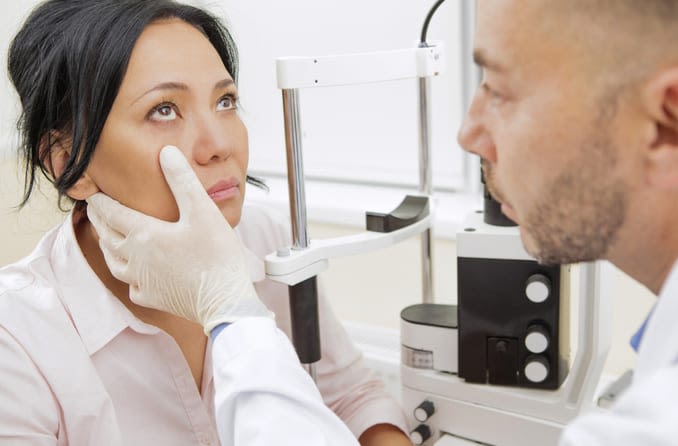Leading Factors to Check Out an Optometrist Chino for Your Eye Health
Leading Factors to Check Out an Optometrist Chino for Your Eye Health
Blog Article
Recognizing the Comprehensive Duty of an Eye Doctor in Modern Eye Treatment
With innovations in innovation and an enhancing emphasis on precautionary care, eye doctors are essential in detecting and handling chronic eye problems, while also involving in very early condition discovery. How do these duties intersect with their role in advertising overall eye wellness, and what does this mean for client end results in a collective medical care atmosphere?
Expanded Extent of Method
In current years, the duty of eye doctors has actually progressed substantially, with lots of experts now accepting an expanded scope of practice that expands past standard eye assessments. Their obligations now encompass a wide array of solutions, including prescribing medications for eye conditions, managing chronic eye conditions, and doing minor surgical treatments.
Additionally, optometrists are currently extra associated with collaborative care, functioning very closely with ophthalmologists, medical care doctors, and various other medical care professionals to make sure alternative patient treatment. This interprofessional collaboration is vital in handling complex instances that call for a multidisciplinary approach. Furthermore, optometrists are playing a critical role in public wellness efforts, such as vision testings and eye health and wellness education and learning, targeted at boosting community health and wellness outcomes.
The increased extent of technique for eye doctors not only boosts their capability to give extensive care yet likewise addresses the expanding need for accessible and efficient eye treatment solutions, adding to total health care enhancements.
Early Illness Detection
Very early detection of eye conditions is progressively ending up being a centerpiece in the broadened role of optometrists. As main eye treatment providers, eye doctors are distinctively positioned to determine very early signs of eye problems such as glaucoma, macular degeneration, diabetic person retinopathy, and cataracts. This critical role is critical, as very early diagnosis can substantially boost the management and diagnosis of these problems, possibly protecting against vision loss and improving patient end results.
Eye doctors use extensive eye assessments to spot subtle modifications in vision and eye health. The capability to acknowledge very early indicators of systemic health concerns, such as high blood pressure and diabetes mellitus, via eye indicators further highlights the value of normal eye examinations.
In addition, optometrists play an essential role in person education and learning, stressing the relevance of regular eye evaluations as component of general health maintenance. By promoting a positive approach to eye treatment, optometrists contribute dramatically to public health, ensuring conditions are caught and taken care of efficiently prior to they can advance.
Advanced Diagnostic Strategies
Advanced diagnostic methods have changed the technique of optometry, enabling specialists to discover and keep track of eye conditions with unmatched accuracy. These improvements have changed the optometric landscape, permitting for much more innovative analysis and intervention techniques. Technologies such as optical comprehensibility tomography (OCT) give high-resolution, cross-sectional pictures of the retina, promoting very early detection of conditions like glaucoma and macular deterioration. This non-invasive strategy has come to be essential in modern-day optometry, using detailed insights into retinal layers.
Another vital advancement is digital retinal imaging, which records detailed views of the retina utilizing high-def electronic cameras. This technology is vital in recognizing adjustments in retinal structure gradually, consequently helping in the administration of problems like diabetic retinopathy. Visual area screening, improved by computer-aided systems, allows for precise mapping of a client's field of view, necessary in detecting and tracking glaucoma progression.
Corneal topography, one more remarkable analysis device, produces topographic maps of the cornea's surface. This is specifically useful in suitable call lenses and preparing refractive surgery. These innovative analysis techniques jointly allow optometrists to offer proactive, targeted care, ensuring far better client outcomes and reinforcing their pivotal function in eye health and wellness management.
Managing Chronic Eye Conditions
Taking care of chronic eye problems is a foundation of optometric care that requires a thorough understanding of different eye conditions and their long-term effects. Eye doctors play a pivotal role in diagnosing, tracking, and handling conditions such as glaucoma, diabetic retinopathy, and age-related macular deterioration. These conditions, if left untreated, can cause considerable visual disability or loss of sight, highlighting the vital value of recurring treatment and monitoring.
Optometrists use a variety of analysis tools, including optical comprehensibility tomography (OCT), aesthetic field testing, and fundus digital photography, to assess the progression of these persistent problems. By closely keeping an eye on adjustments in eye health, optometrists can change treatment strategies to mitigate condition progression. This may involve suggesting medications, recommending way of living alterations, or coordinating with eye doctors for medical treatments when essential.

Function in Preventive Care
Precautionary care is a fundamental facet of optometry that concentrates on keeping eye health and preventing the onset of eye diseases. Optometrists play an important function in very early detection and avoidance, employing routine eye examinations to identify danger elements and refined adjustments in ocular health. Opticore Optometry. These examinations are not simply regarding vision correction yet incorporate a detailed evaluation of eye features and structures, making it possible for the recognition of problems such as glaucoma, cataracts, and macular deterioration at a beginning
Along with diagnostics, optometrists educate individuals on way of living selections that advertise eye health, such as appropriate nutrition, UV protection, and the relevance of routine eye exams. They suggest on the proper use digital gadgets to stop digital eye strain, an expanding worry in the digital age. Optometrists likewise supply guidance on safety eyeglasses for leisure and page occupational tasks, alleviating the risk of injury.
Preventative eye care prolongs to systemic health problems that materialize in the eyes, such as diabetes mellitus and hypertension. By teaming up with other health care experts, optometrists contribute to holistic client treatment, emphasizing the interconnectedness of ocular and systemic wellness. This aggressive approach is vital in guarding aesthetic skill and total health.
Conclusion
Optometrists now occupy a pivotal role in modern eye care, characterized by find more info an expanded scope that includes diagnosing and managing chronic eye problems, suggesting drugs, and executing small operations (Eye Doctor Optometrist). Their proficiency in early disease discovery is boosted by innovative analysis methods such as optical coherence tomography and digital retinal imaging. By stressing preventive treatment and client education, optometrists add dramatically to general eye health and wellness, working together with other medical care experts to guarantee reliable and detailed client outcomes

In addition to diagnostics, optometrists enlighten clients on way of living options that advertise eye health, such as correct nutrition, UV security, and the relevance of routine eye exams.Preventive eye treatment expands to systemic health problems that manifest in the eyes, such as diabetes mellitus and high blood pressure.Optometrists currently inhabit a crucial function in modern-day eye care, defined by an increased scope that includes detecting and managing chronic eye conditions, suggesting medications, and carrying out small medical treatments.
Report this page